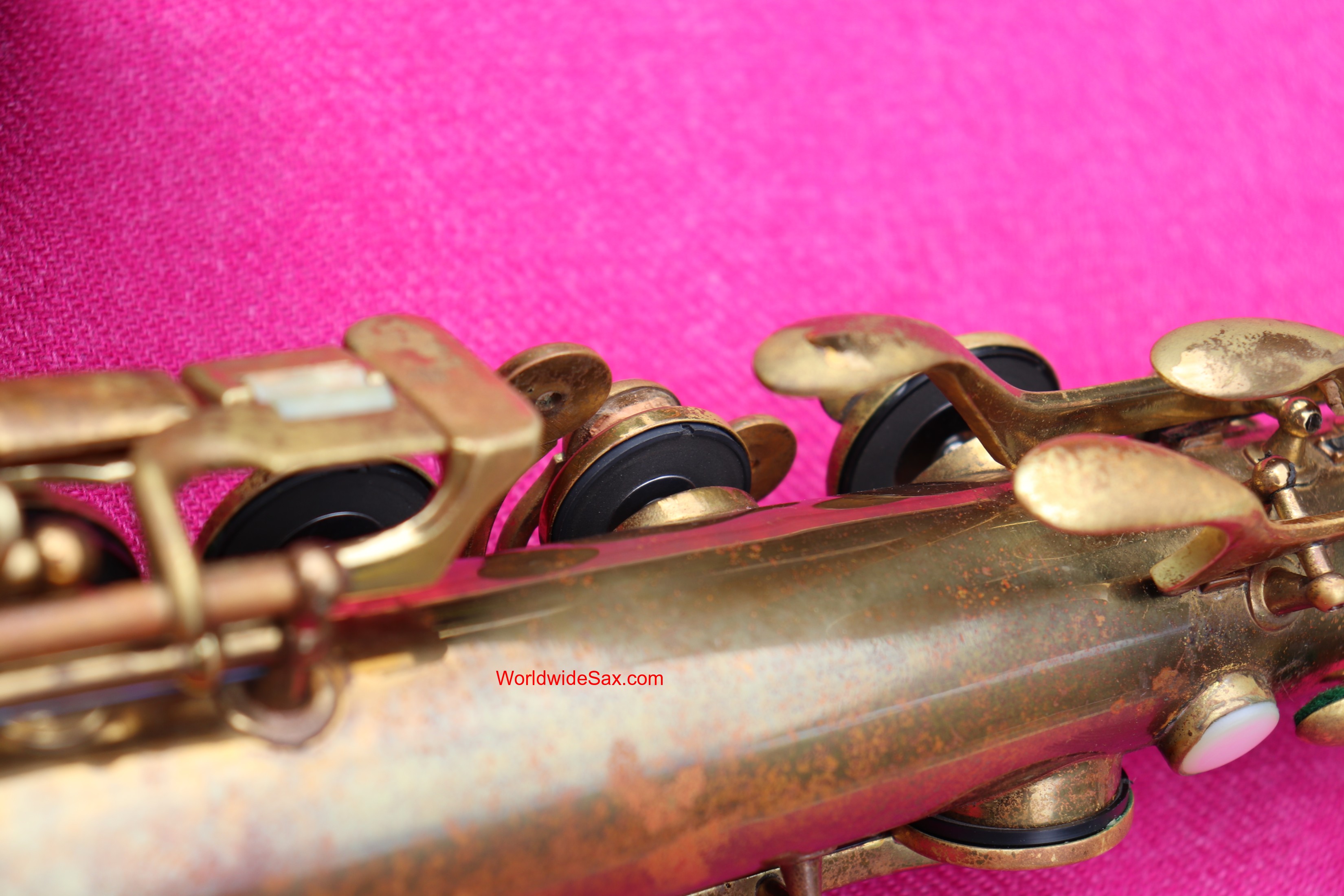

There’s a great site called The Martin Story run by Edwin Van Druten, which you should visit to get more information and lots of pictures of Martin saxophones.ĭo you own a Martin saxophone? How does it compare with others you’ve played? As always, let me know by commenting on this article.Ī simple, but unique idea - supply the description, review what the horn is like to play, weigh it and provide a video of what it sounds like. Ease of Fingering – Well balanced, a bit too light on G# and D# keys.
Pan american alto saxophone sax 1930 full#
Pan american alto saxophone sax 1930 serial number#
It has the serial number stamped on the neck as well – the sign of a good quality professional horn. It is marked ‘Martin Handcraft, Elkhart Ind.’ on the bell and ‘Martin, 99698, Low Pitch’ under the strap holder. There’s no doubt that Martin manufactured any saxophone which has these features. They look better than the rolled tone holes found on Conn instruments, but for the life of me I can’t tell any difference in playing between these two types of tone holes and normal ones. It has the classic Martin ‘bevelled’ tone holes of course, which bend in for the last quarter of an inch. It is a ‘clapper’ with the bottom keys split between the left and right sides of the bell. It is a silver-plated horn in excellent condition having been cleaned in a silver-polish bath and supplied with a silver saver in its original case. Perhaps I should refer to the instrument as a ‘transitional typewriter’. It is not as extreme in the use of these as some I’ve seen in pictures – the three palm keys on the left hand side have these key tops but the bottom ones do not. This instrument is a ‘Typewriter’ – a term used to describe the use of flat pearl key caps in places usually reserved for curved metal parts. I can guess that making O rings and saxophones are similar – just on an immensely different scale. Although John Henry died as early as 1910, his company thrived – eventually leaving the saxophone trade to help make rockets for NASA. Leaving Conn he set up The Martin Band Instrument Company in 1904 and ran in a factory at 431-433 Baldwin Street in Elkhart, Indiana.

Moving to Elkhart he joined Conn, where he was one of only five employees at the time although he also made instruments for a company in Michigan. He founded The Martin Company in 1865 in Chicago but his factory was burnt down in the great fire of 1871. Johann Heinrich Martin was born in Dresden in Germany in 1835 and learnt to manufacture musical instruments there before emigrating to the US. They have a feel to them unlike any other make. I really like the precision engineering of Martin saxophones. It is a silver-plated Martin Handraft alto from 1930 and is excellent condition, made just after the stock market crash the previous year. I bought this from my saxophone technician a few years age, who had already repaired, repadded and replaced the felts on it.


 0 kommentar(er)
0 kommentar(er)
